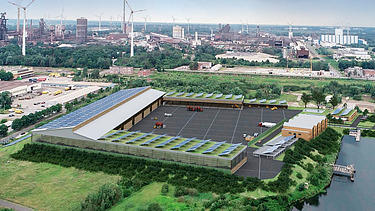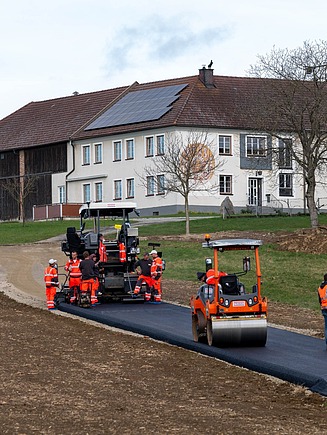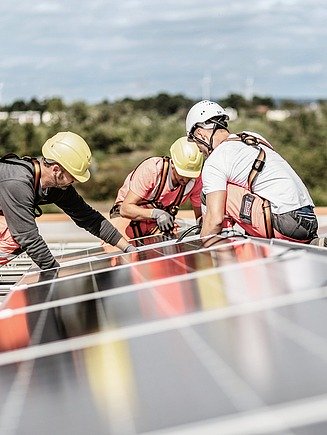Sustainability strategy at STRABAG

The climate crisis is one of the most pressing challenges of our time. The construction industry as a whole accounts for a significant share of global greenhouse gas emissions and, in addition to a high demand for energy and resources, is also responsible for a corresponding volume of waste. As a leading construction technology group, we at STRABAG accept responsibility and are making an active contribution to achieving climate neutrality and reducing greenhouse gases.
Climate-neutral value chain by 2040
With the sustainability strategy adopted in 2021, STRABAG has set itself the goal of becoming climate neutral along the entire value chain by 2040. In the design and build phases of its construction projects, the company places a particular focus on environmentally resilient and sustainable construction methods and on the efficient use of resources and their recyclability in order to limit as much as possible any negative impact on the environment. The sustainability strategy, founded on the three pillars of economy, environment and social welfare, was embedded in the corporate strategy and specifically aligned to the individual business units. A special focus is on activities in four major fields of action: CO₂ emissions, materials and circularity, supply chain and construction life cycle. As the driving force behind the required transformation, technology is a necessary tool for leveraging the potential in all three pillars.

Data as a basis for carbon reduction
In recent years, we have developed a robust data basis to measure our carbon emissions – Initial Scope 1 and Scope 2. This is a major challenge for a group of our size with a high degree of diversification, as it requires compiling, consolidating, evaluating and verifying an immense amount of data from different countries, different production facilities and individual construction sites. This database is necessary to develop pathways for reducing our emissions and to design our own processes in such a way that they do not have a negative impact on the climate in their entirety. We have divided our path to zero emissions into five subgoals:
Our path to climate neutrality
You can find out more about our sustainability strategy in our sustainability report.
Find out more!
Achieving these goals requires many different measures and activities. More than 400 sustainability projects are already being implemented throughout the corporate group:
Clean Air Asphalt (ClAir® Asphalt) – The multifunctional asphalt surface layer from STRABAG AG simultaneously purifies the air and reduces noise, thereby minimising the impact of vehicle traffic on people and the environment.
C3 Circular Construction & Technology Center Bremen – STRABAG Environmental Technology is realising a state-of-the-art technology and competence centre for urban mining and construction waste processing on the 13-hectare site of a former refinery tank farm in the port of Bremen.
Dolorite quarry near Saalfelden – At our Saalfelden quarry, we produce electrical energy using the weight of the excavated material on the conveyor. This allows us to cover around 20 % of the electricity needs at the quarry ourselves while expanding the amount of energy generated in-house.
Innovation Center – During the addition of a fourth office building to our ZÜBLIN campus in Stuttgart, we are making use of resource-saving building materials, energy-efficient technologies and digital construction processes.
Witten/Herdecke University – ZÜBLIN Timber installed a total of 1,382 m³ of wood from sustainable forestry sources to complete the new campus building at the university. Every cubic metre of wood used in the construction binds one tonne of climate-warming carbon dioxide from the atmosphere.
Ready. ECO. Go! – In the STRABAG fuel-saving competition, each organisational unit determines the percent savings of its average fuel consumption compared to the same value for the previous year.
“Sustainable Construction Site” base certification awarded by the German Sustainable Building Council (DGNB) – The certification expands the focus of sustainability beyond the buildings themselves to also include their construction. Thirty STRABAG projects have already been certified since 2021.


